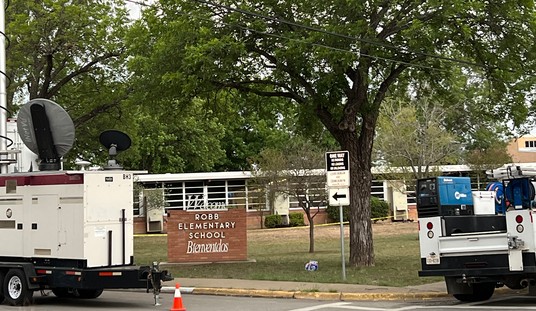CBS brings us more bad news about the ObamaCare program, and this has nothing to do with the website, either. The White House has tried to parry critics of the website debacle by promoting the numbers of visits to the website and ambiguous references to “successes” in insuring people. Most of those enrollments aren’t in private insurance, CBS’ Jan Crawford reports, but in Medicaid. The lack of sales in private insurance may mean a collapse of the entire reform program:
CBS News has confirmed that in Washington, of the more than 35,000 people newly enrolled, 87 percent signed up for Medicaid. In Kentucky, out of 26,000 new enrollments, 82 percent are in Medicaid. And in New York, of 37,000 enrollments, Medicaid accounts for 64 percent. And there are similar stories across the country in nearly half of the states that run their own exchanges. …
But Gail Wilensky, a former Medicaid director, said the numbers are causing concern in the insurance industry, which needs healthy adults to buy private insurance in large numbers for the system to work.
“Either the private insurance enrollments come up somewhere around the expected amount or there’s going to be a problem. … You need a volume and you need a mix of people that are healthy as well as high users in private insurance, in order to have it be sustainable,” she said.
The Obama administration says they expected these high enrollment numbers in Medicaid because the law expands the number of low-income people who can get Medicaid, CBS News’ Jan Crawford reported on “CBS This Morning.” Supporters say this shows demand. But industry sources say that if we do not see some real turnaround soon, there could be big problems for the entire system.
This prompts a question: why didn’t Democrats just expand Medicaid? Of the 30-48 million of the uninsured in America (depending on estimates), those uninsured and making less than $50,000 in household income only came to somewhere between 8 and 14 million, according to the Census Bureau in 2009. Eighty-five percent of Americans had insurance, and 87% of those were satisfied with it. Expanding Medicaid would have been costly and wouldn’t have been an easy sale — as we see with Republican governors now — but it would have been far less costly and intrusive as the Rube Goldberg contraption built by Barack Obama and his fellow Democrats, and it would have narrowly targeted the problem.
Instead, we have this disaster that will drive up health care costs dramatically for all Americans, making everyone poorer in the process in terms of disposable income. And this is more bad news for the White House, because the media isn’t covering their flank on this collapse, at least not so far.
Update: Nick Gillespie reminds us that the new Medicaid coverage will still be very expensive, and not terribly effective:
In a controversial (and possibly illegal) move, Ohio’s Controlling Board voted to expand Medicaid coverage in the state to adults that were not previously eligible by way of accepting billions in federal funds. That means 25 states, plus the District of Columbia, have now signed on to take part in an aspect of the Affordable Care Act that is both optional and ill-considered. More states are expected to follow suit, even some that, like Ohio, have Republican governors and conservative legislatures.
This is bad news. Medicaid, the nation’s health care program for low-income citizens and those with certain disabilities, is expensive. States are not required to participate in the program, but all do, though eligibility requirements differ from state to state. In 2011, states devoted nearly 24 percent (PDF) of total spending to Medicaid—the single largest state expense—despite the fact that there’s little evidence that it actually improves the health outcomes of its beneficiaries. …
[T]here’s little evidence that Medicaid coverage improves the health and longevity of beneficiaries. For instance, a major 2010 University of Virginia study found that for patients undergoing major surgical procedures, those on Medicaid were 93 percent more likely to die than patients with private insurance, while the uninsured were just 74 percent more likely to die. Such awful outcomes for Medicaid patients are found in a variety of studies looking at cancer, heart problems, and other maladies.
Evidence from the widely respected Oregon Health Insurance Experiment, which compared the health of Medicaid recipients to a control group, found “that Medicaid coverage generated no significant improvements in measured physical health outcomes in the first 2 years.” Such results are broadly consistent with findings that insurance status has little or no impact on longevity. In 2009, for instance, Columbia economist Frank Lichtenburg published a study looking at longevity in states between 1991 and 2004 and concluded that “growth in life expectancy was uncorrelated across states with health insurance coverage and education.”
Even the lead author of a 2012 study that found decreases in mortality rates after some states voluntarily expanded Medicaid acknowledged that the data he worked with was too crude to make definitive statements: “I can’t tell you for sure that this is a cause-and-effect relationship,” he said.








Join the conversation as a VIP Member